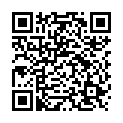|
|
|
| Module code: B-A-5.2 |
|
|
4V (4 hours per week) |
|
6 |
| Semester: 1 |
| Mandatory course: yes |
Language of instruction:
German |
Assessment:
Written exam (50%)
Structural Systems: Student research project (50%)
[updated 04.10.2020]
|
B-A-5.2 (P120-0100, P120-0101) Architecture, Bachelor, ASPO 01.10.2013
, semester 1, mandatory course
|
60 class hours (= 45 clock hours) over a 15-week period.
The total student study time is 180 hours (equivalent to 6 ECTS credits).
There are therefore 135 hours available for class preparation and follow-up work and exam preparation.
|
Recommended prerequisites (modules):
None.
|
Recommended as prerequisite for:
B-A-5.4 Structural Systems and Building Physics
[updated 25.08.2020]
|
Module coordinator:
Prof. Dipl.-Ing. Matthias Michel |
Lecturer:
Prof. Dipl.-Ing. Matthias Michel (lecture/exercise)
Lehrbeauftragte (lecture)
[updated 26.08.2020]
|
Learning outcomes:
Structural Systems
Structural engineering teaches the analysis, design, pre-dimensioning and construction of structures, taking into account both design and construction parameters.
In addition to function, shape and space, the supporting structure is an essential element of a building and therefore, its development and integration is part of the design process, as well as constructive training. It is, thus, one aspect of a holistic planning process.
Ultimately, an architect should be able to provide the structural engineer with meaningful design specifications, provide corrective support during the constructive development and understand them in the context of a fruitful cooperation.
Materials:
Building materials science provides an overview of the different material groups relevant for construction. In addition to their properties, the materials will be discussed with regard to their constructive application.
[updated 04.10.2020]
|
Module content:
Structural Systems:
Small model making task with subsequent static load test.
Structural design and dimensioning of the main load-bearing elements of the building construction module assignment.
Introduction to the function of structural engineering, actions, balance of forces and moments, static determination, internal forces and moments, load cases and envelopes, stress for bending and shear, safety concepts, moment of inertia, moment of resistance and static moment, bending beams in wood and steel, tension and compression members in wood and steel
Materials:
The following construction materials will be introduced: wood, steel, glass, reinforced concrete, masonry.
In particular with regard to special aspects, technical properties (mechanical and physical) possible uses and typical applications; Material developments (history and innovation), construction and design
[updated 04.10.2020]
|
Teaching methods/Media:
_Multiple groups of 20-25 students / or parallel with several lecturers/tutors
[updated 04.10.2020]
|
Recommended or required reading:
Lecture notes und relevante standards und directives
Krauss; Führer; Neukäter; Willems: Grundlagen der Tragwerklehre 1+2
Krauss; Führer; Jürges: Tabellen zur Tragwerklehre
Kuff, Paul: Tragwerke als Elemente der Gebäude- und Inneraumgestaltung
Leicher, Gottfried: Tragwerkslehre in Beispielen und Zeichnungen
Sandaker; Eggen: Die konstruktiven Prinzipien der Architektur
Siegel, Curt: Strukturformen der modernen Architektur
Torroja, Eduardo: Logik der Form
Borghoff: Historische Baustoffe
von Braun, Manfred: Probst-Baustoffführer
Qeisser: Baustoffkunde für den Praktiker
Scholz: Baustoffkenntnis
Volland: Baustoffe
[updated 04.10.2020]
|


